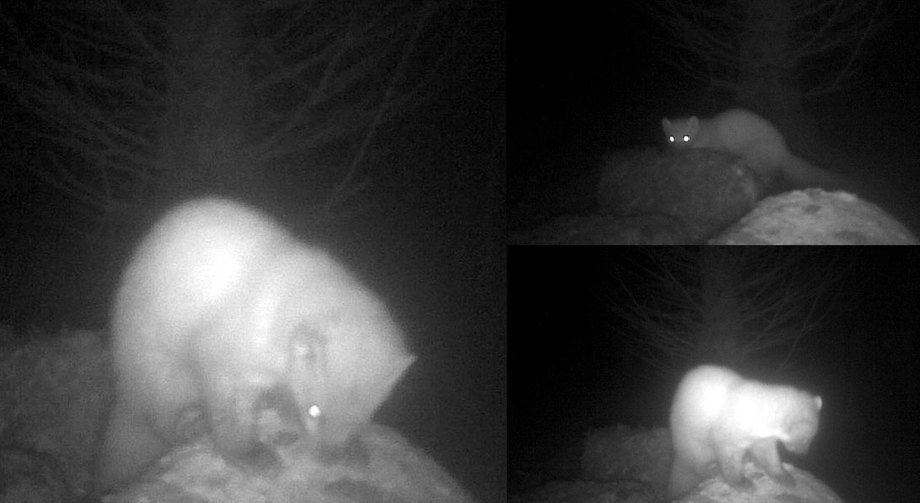Field Notes: Over the bridge to Skye
Skye Conservation Ranger Cathryn Baille is on the trail of an taghan – a nocturnal visitor to our camera trap
 Luxurious rich-brown fur, creamy-yellow bib, long-bushy tail and cream-tipped ears, about the size of a domestic cat, the European pine marten (an taghan in Gaelic) is one of our rarest mammals, yet it is making a remarkable recovery.
Luxurious rich-brown fur, creamy-yellow bib, long-bushy tail and cream-tipped ears, about the size of a domestic cat, the European pine marten (an taghan in Gaelic) is one of our rarest mammals, yet it is making a remarkable recovery.
The increase in native woodland, as well as protection against persecution, has meant that this once-endangered creature is now expanding its range. Numbers in the North West Highlands are strong, and we now see evidence of this elusive member of the Mustelid family across southern Scotland and even into England and Wales. They made their way to Skye shortly after the completion of the Skye Bridge in 1995.
Leading a mainly solitary life, adults hold a territory of up to 160 hectares and are generally nocturnal, making them difficult to see. Mature pine marten come together to mate in summer, but the female withholds implantation of the fertilised egg until January. Usually a litter of between two to six kits are born around April time and they are heavily dependent on their mother for the first six weeks. After that they start to become independent and will usually start to disperse after three to four months.
Although classed as carnivores, preying mainly on small rodents, amphibians and small birds, they are smart and opportunistic and will also feed on carrion, insects, eggs, fungi, fruits, nuts and even honey. The only member of the weasel family to have partially retractable claws, this along with their impressive tail makes them perfectly adapted to a life in the trees.
Their intelligence and resilience mean that martens have made a few enemies over the years. Historically accused of killing sheep, capable of wiping out an entire hen house and their taste for young game birds means that they gained a reputation as the ‘Scourge of the Glen’. Incredibly adaptable, they can take advantage of the warmth and security of our modern homes and occasionally move in. For some this might be delightful, but others are less impressed by the noise and the smell.
Increasingly, however, we recognise the importance of our native wildlife - how every cog in the great wheel of the natural world is inextricably linked. All the evidence shows that restoring predators can have major benefits for the wider ecosystem, helping to redress the balance that has been lost.
Nurturing our nature has economic benefits too. More and more visitors are coming to Scotland to experience wild places and hope to catch a glimpse of the some of the UKs most elusive wildlife. Otters, eagles, deer and dolphins are what draw many people north of the border and now the tenacious taghan can be added to the list of possible encounters.
Photos: The pine marten images above are taken from camera trap footage recorded in Ringill, one of our woodlands on the land we look after on Skye that is being gradually transformed from Sitka spruce plantation to native, broadleaved woodland.

